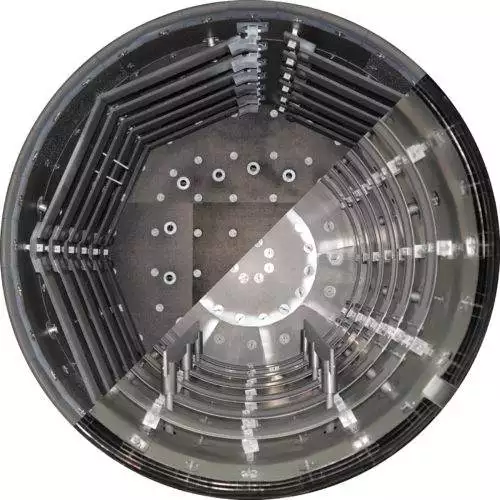
In today’s competitive business environment, it’s important to make sure your equipment runs efficiently and lasts as long as possible. One effective method for extending the life of your vacuum furnace is to maintain a clean hot zone that is free from process contaminants. Below is a general guide for performing a cleanup cycle on a graphite or metal hot zone:
1. Ramp Phase: Heat up (ramp) the furnace slowly at a rate of ≤ 20 °F (≤ 11 °C) per minute to the cleanup temperature, which is typically 100 °F (56 °C) higher than the maximum operating temperature attained during a normal process cycle, but should not exceed the maximum allowable furnace temperature.
Note: If the maximum process cycle temperature is < 1,900 °F (1,038 °C), the cleanup temperature should still be ≥ 2,000 °F (1,093 °C).
2. Partial Pressure: During the ramp phase of the program, nitrogen or argon partial pressure should be used to maximize heat transfer, as well as to keep process contaminants out of the diffusion pump. Maximum benefit is realized when gas pressure is set at (or near) maximum allowable partial pressure, typically either 1,000 to 2,000 microns.
3. Soak Phase: Once the furnace reaches the set point (the cleanup temperature), maintain the temperature and partial pressure for 60 minutes. Then, remove the partial pressure event from the process and allow the furnace to pump down to its lowest possible vacuum level. Once the vacuum has stabilized at its lowest level (typically reached in five to ten minutes), allow the furnace to soak under this hard-vacuum condition, maintaining temperature, for an additional 60 minutes.
4. De-energize Phase: Turn the heat off and permit the furnace to vacuum cool (i.e., with no backfill gas or fan usage) to < 1,500 °F (816 °C).
Note: If an accurate leak-up rate calculation is desired, it should be performed over a period of ≥ four hours, beginning after the above steps have been performed and the furnace has been permitted to vacuum cool to ≤ 80 °F (27 °C) – or as close to ambient temperature as possible.
5. Cool Down Phase: If a leak-up test will not be performed, once the furnace reaches < 1,500 °F (816 °C), it may be fan cooled to room temperature.
6. Final Inspection: Open the door. Visually inspect the heating elements and all hot zone components for cleanliness and mechanical integrity. Perform an element-to-ground check to confirm proper resistance (typically 87 Ω to 110 Ω).
Additional Considerations:
- Hot zone contamination will vary based on materials, heat treatment processes and production volumes. This means there is no one-size-fits-all cleanup cycle. The above process may need to be adjusted based on your particular requirements. Ramp rates, gas pressure and soak times may all be adjusted within the allowable limits to achieve the best possible results. It is important to always refer to your furnace equipment manual for exact specifications.
- If you have an older furnace or one that has been out of production for some time, consider the following:
- The vacuum furnace must be taken higher in temperature and soaked long enough to reach a steady-state heat loss condition. Make sure your furnace can withstand this before proceeding with a cleanup cycle.
- For most Ipsen-brand furnaces, that average cleanup temperatures should not exceed 2,200 °F (1,204 °C).
Have a heat-treating related question?
